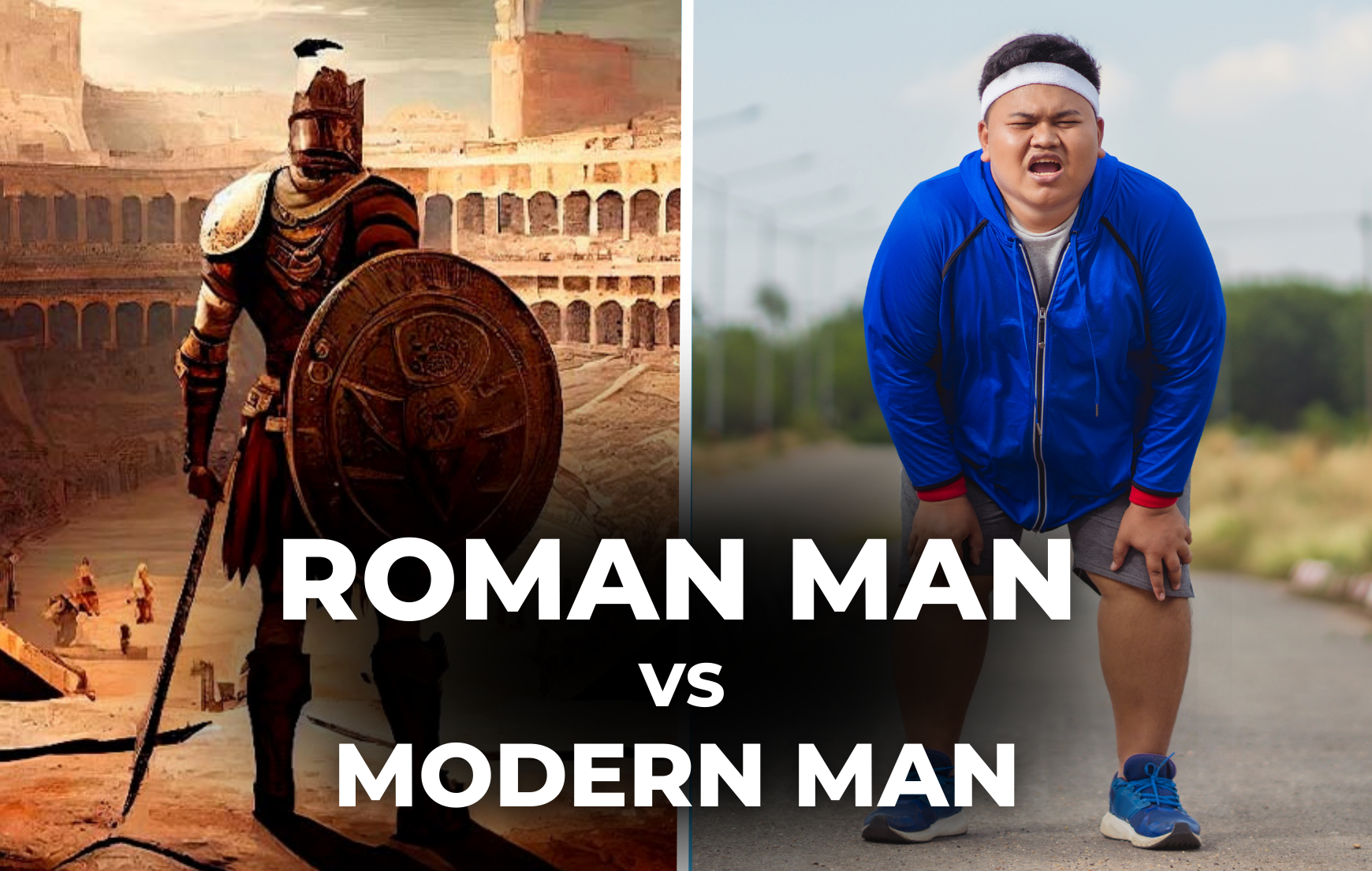When we think of the Roman era, images of gladiators, grand architecture, and advanced civilization come to mind. But have you ever considered the physical prowess of the average Roman man compared to the modern man?
The Romans were not just intellectually advanced; they were also physically robust, thanks to their lifestyle, diet, and societal norms.
This article aims to explore why the average modern man may be considered “weaker” compared to his Roman counterpart.
Let’s dive in.
The Role of Physical Labor
In ancient Rome, physical labor was an integral part of daily life. Whether you were a farmer tilling the land, a builder constructing an aqueduct, or a soldier training for battle, your day involved strenuous physical activity.
This constant engagement with physical labor naturally led to higher muscle mass and better physical conditioning.
Fast forward to today, and the picture is quite different. The modern man often finds himself confined to an office desk, staring at a computer screen for hours on end.
Physical labor has been largely replaced by machines and technology, leading to a more sedentary lifestyle.
According to a study by the World Health Organization, less than 20% of adults meet the recommended levels of physical activity, leading to a decline in overall muscle mass and physical fitness.

Nutritional Differences
The Roman diet was a model of balance and nutrition. A typical meal might include whole grains, fresh vegetables, and lean meats.
Processed foods were virtually non-existent, and meals were often prepared from scratch, leading to a diet rich in essential nutrients.
Contrast this with the modern diet, which is laden with processed foods, artificial sweeteners, and high levels of sodium and sugar. These dietary choices obviously have a direct impact on our physical well-being.
A study published in the Journal of Nutrition and Metabolism points out how obvious it is that poor dietary habits are linked to decreased muscle mass and lower levels of physical fitness.

Mental Toughness and Resilience
The Romans were not just physically strong; they were mentally resilient as well. Stoic philosophy, which originated in ancient Greece and was widely adopted by the Romans, taught the importance of mental fortitude and resilience. Military training further instilled a sense of discipline and mental toughness.
In contrast, the modern lifestyle often prioritizes comfort and convenience over mental resilience. The lack of challenges that require mental toughness has led to a society that is less equipped to handle stress and physical exertion.
According to a study in the Journal of Applied Psychology, there is a strong correlation between mental resilience and physical strength.
Technological Reliance
While technological advancements have made our lives easier, they have also made us more reliant on machines for even the most basic tasks. From washing machines to electric drills, modern tools have reduced the need for human effort.
In Roman times, the tools were rudimentary, requiring significant human effort to operate. This constant physical engagement contributed to their overall strength and fitness.
Data from the National Institute of Health shows that the average caloric expenditure of a modern man is significantly lower than that of his Roman counterpart, primarily due to technological reliance.
Conclusion
In summary, the average modern man falls short of his Roman counterpart in terms of physical labor, nutrition, mental toughness, and technological reliance.
While we have advanced in many aspects, it seems we have regressed in terms of our physical and mental well-being. However, all is not lost.
By adopting a lifestyle that incorporates regular physical activity, a balanced diet, mental resilience training, and less reliance on technology, we can reclaim some of that lost Roman vigor.

You must be logged in to post a comment.